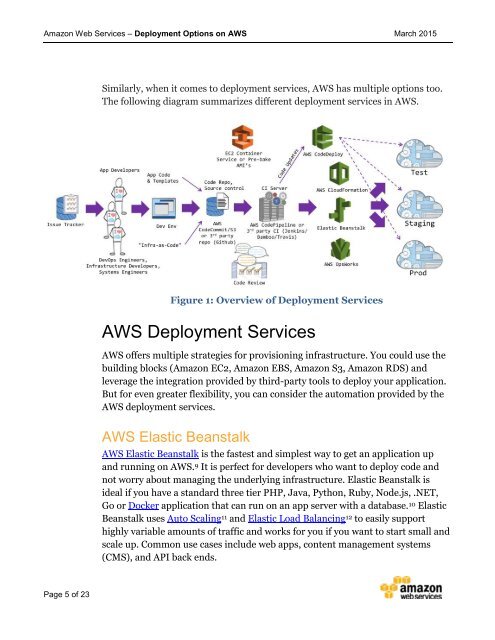kadirtest
You also want an ePaper? Increase the reach of your titles
YUMPU automatically turns print PDFs into web optimized ePapers that Google loves.
Amazon Web Services – Deployment Options on AWS March 2015<br />
Similarly, when it comes to deployment services, AWS has multiple options too.<br />
The following diagram summarizes different deployment services in AWS.<br />
Figure 1: Overview of Deployment Services<br />
AWS Deployment Services<br />
AWS offers multiple strategies for provisioning infrastructure. You could use the<br />
building blocks (Amazon EC2, Amazon EBS, Amazon S3, Amazon RDS) and<br />
leverage the integration provided by third-party tools to deploy your application.<br />
But for even greater flexibility, you can consider the automation provided by the<br />
AWS deployment services.<br />
AWS Elastic Beanstalk<br />
AWS Elastic Beanstalk is the fastest and simplest way to get an application up<br />
and running on AWS. 9 It is perfect for developers who want to deploy code and<br />
not worry about managing the underlying infrastructure. Elastic Beanstalk is<br />
ideal if you have a standard three tier PHP, Java, Python, Ruby, Node.js, .NET,<br />
Go or Docker application that can run on an app server with a database. 10 Elastic<br />
Beanstalk uses Auto Scaling 11 and Elastic Load Balancing 12 to easily support<br />
highly variable amounts of traffic and works for you if you want to start small and<br />
scale up. Common use cases include web apps, content management systems<br />
(CMS), and API back ends.<br />
Page 5 of 23
















